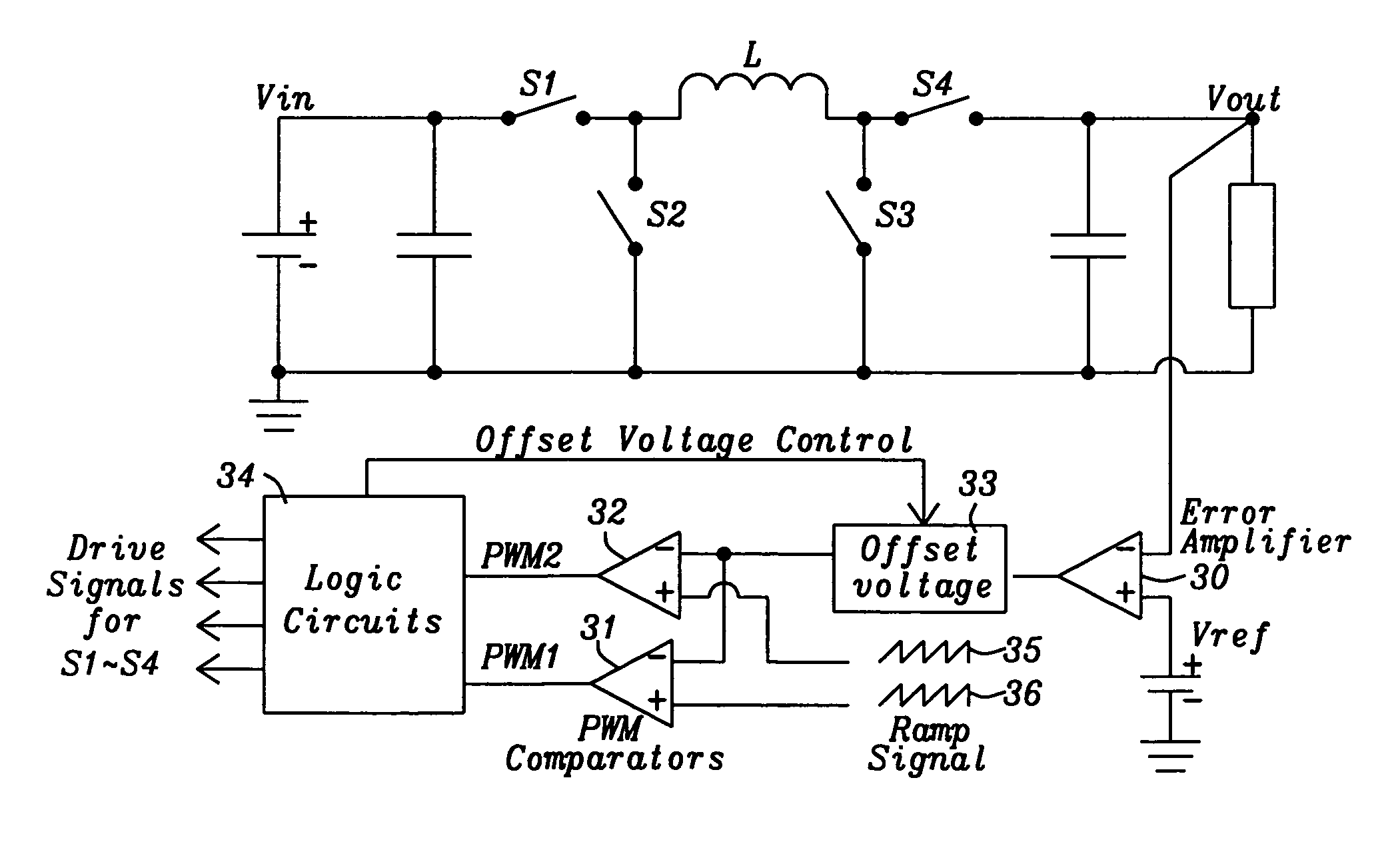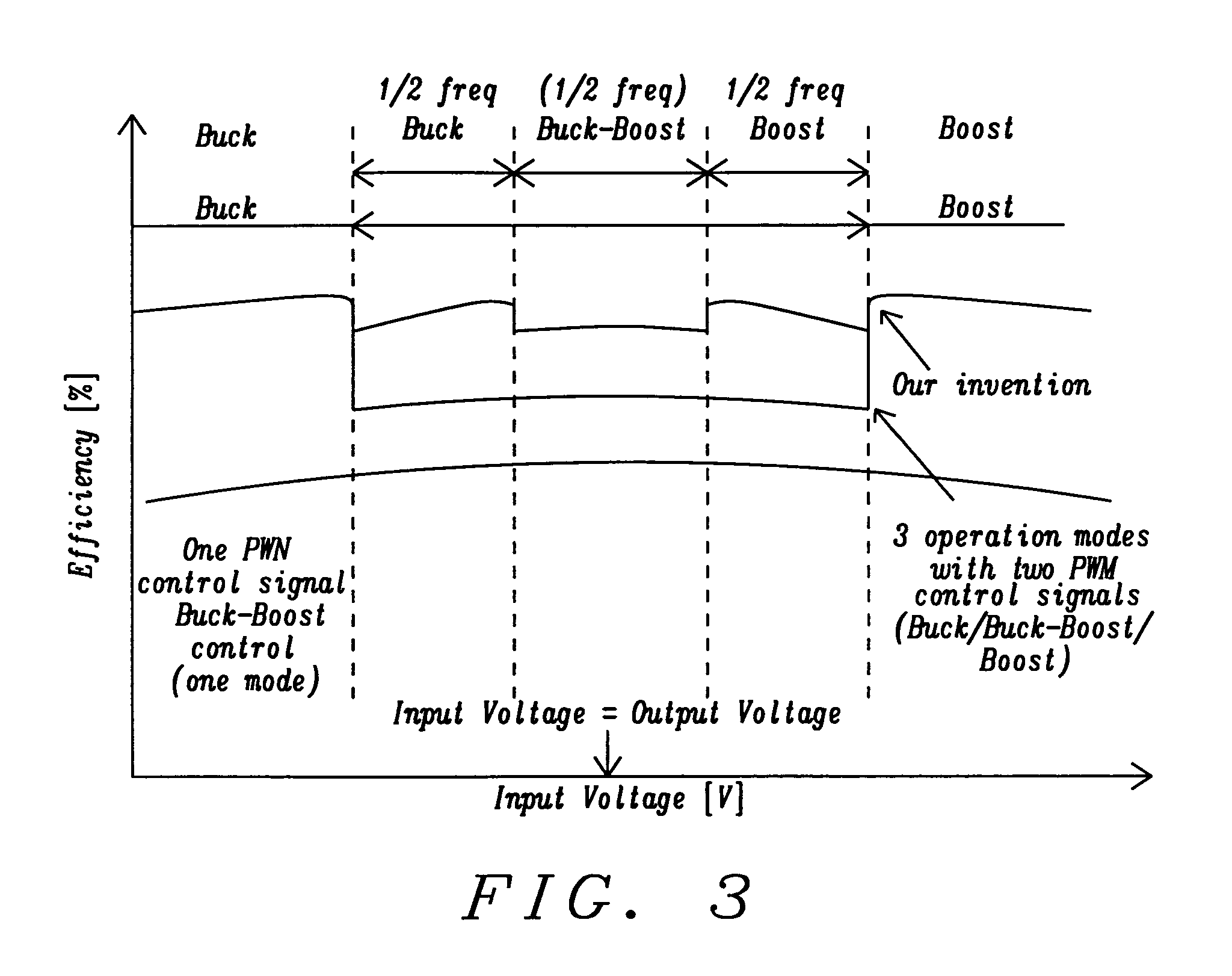Buck-boost converter with improved efficiency operation
a buck-boost converter and efficiency technology, applied in the direction of electric variable regulation, ac network circuit arrangement, instruments, etc., can solve the problems of reducing the efficiency, increasing the driving loss of switches, and the conversion efficiency is the downside of the buck-boost converter. achieve the effect of improving the efficiency of non-inverted buck-boost converters
- Summary
- Abstract
- Description
- Claims
- Application Information
AI Technical Summary
Benefits of technology
Problems solved by technology
Method used
Image
Examples
Embodiment Construction
[0031]Methods and circuits to improve the efficiency of buck-boost converters are disclosed.
[0032]In the control method invented, the buck-boost converter operation / control can be divided into 5 modes, which are buck, half frequency buck, buck-boost, half frequency boost, and boost mode. In another embodiment of the invention the buck-boost operation could also be divided in 3 modes, which are buck and boost mode in full frequency and buck-boost mode in halved frequency. This 3-mode operation will be outlined later.
[0033]FIG. 2 illustrates a block diagram of the buck-boost converter of the present invention, which is enabled to operate in five different operation modes.
[0034]In buck and half frequency buck mode, switch S3 is continuously off and switch S4 is continuously on and this creates a buck topology. The difference between buck and half frequency buck mode is the reduced switching frequency of the half frequency buck mode. In the half frequency buck mode the converter operate...
PUM
 Login to View More
Login to View More Abstract
Description
Claims
Application Information
 Login to View More
Login to View More - R&D
- Intellectual Property
- Life Sciences
- Materials
- Tech Scout
- Unparalleled Data Quality
- Higher Quality Content
- 60% Fewer Hallucinations
Browse by: Latest US Patents, China's latest patents, Technical Efficacy Thesaurus, Application Domain, Technology Topic, Popular Technical Reports.
© 2025 PatSnap. All rights reserved.Legal|Privacy policy|Modern Slavery Act Transparency Statement|Sitemap|About US| Contact US: help@patsnap.com



